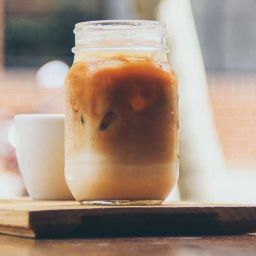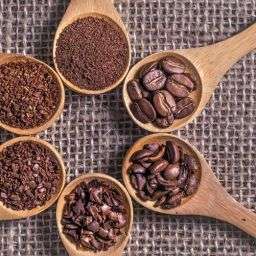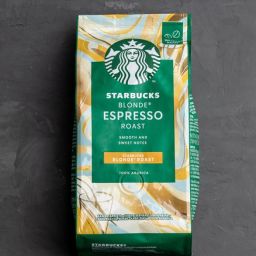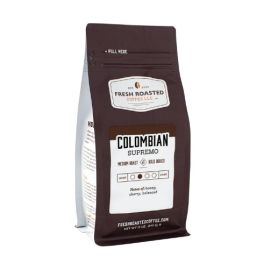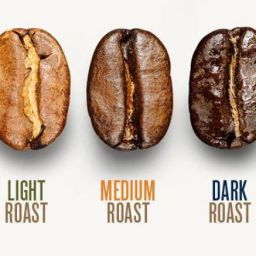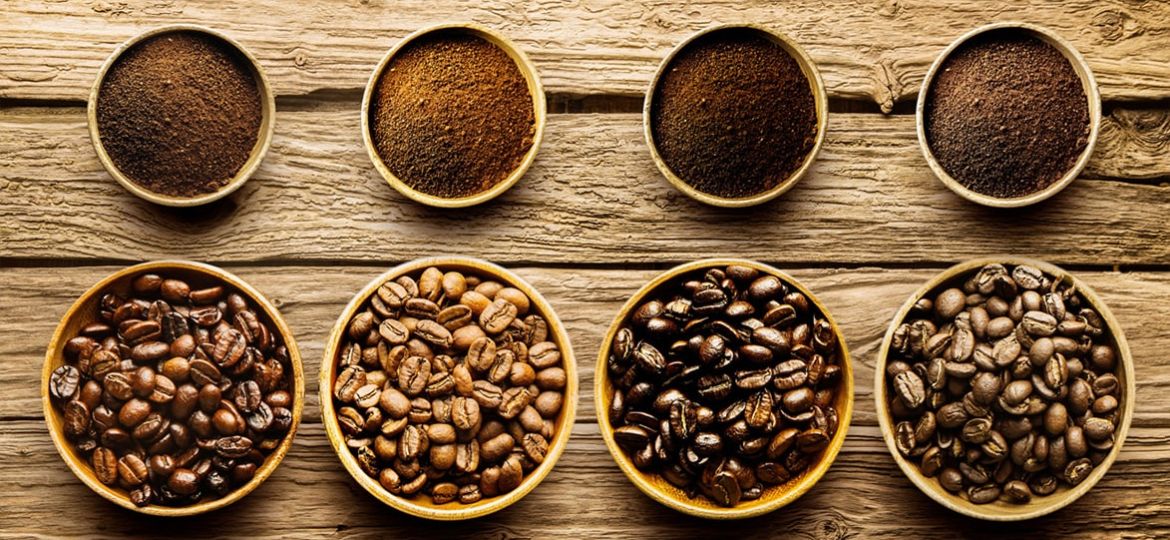
The Moccamaster is a beacon for coffee lovers, promising a superb brew with its precise engineering and classic design. Renowned among aficionados, this coffee maker stands out for its ability to marry simplicity with exceptional quality. One crucial aspect often overlooked yet vital to achieving the perfect cup is the grind size of your coffee. It’s not just about the beans or the water; the grind size plays a pivotal role in extracting the rich flavors and aromas that make your morning cup truly special.
Key Takeaways
- Optimal Grind Size: For Moccamaster enthusiasts, hitting the sweet spot with a medium-coarse grind size is key. Too fine, and you risk bitterness from over-extraction; too coarse, and you might find your brew lacking in flavor.
- The Right Grinder: Consistency is king, making burr grinders the go-to for their uniform grind size. This small investment can elevate your coffee game significantly.
- Quality of Water and Ratio: The water you use and how you measure your coffee can make or break your brew. Aim for high-quality water and stick to recommended coffee-to-water ratios for a balanced cup.
- Machine Maintenance: To keep the Moccamaster brewing perfection, regular cleaning and maintenance are non-negotiable. This ensures every cup tastes as good as the first.
Understanding Coffee Grind Size
Grind size isn’t just a detail; it’s a critical factor in brewing. The Moccamaster thrives with a medium-coarse grind, a texture resembling sea salt. This specific size allows for optimal water flow and extraction time, ensuring each sip is balanced and full-bodied. But why does this matter so much?
The Impact on Coffee Quality
When coffee is ground too fine, it can lead to over-extraction. This means the water spends too much time in contact with the coffee, pulling out unpleasant flavors and resulting in a bitter cup. On the other hand, a grind that’s too coarse doesn’t allow the water to extract enough flavor, leading to a weak and underwhelming coffee experience.
The medium-coarse grind strikes the perfect balance, allowing the water to extract the right amount of flavor compounds without going overboard.
Selecting the Right Grinder
When it comes to making coffee, especially with a precision brewer like the Moccamaster, the type of grinder you use can make a big difference in your cup’s quality. Burr grinders and blade grinders are the two main types you’ll encounter, each with its own set of advantages and drawbacks.
Burr Grinders vs. Blade Grinders
- Burr Grinders: These grinders crush coffee beans between two surfaces, usually metal or ceramic, that are adjustable for different grind sizes. This method produces a consistent grind, essential for extracting the full flavor from your coffee. Burr grinders are ideal for coffee aficionados who appreciate the nuances in each cup.
- Blade Grinders: These work more like a blender, using a blade to chop up the beans. While they’re more affordable and compact, the grind is often uneven, leading to inconsistent brews. For casual coffee drinkers, this might be acceptable, but it’s not recommended for those using a Moccamaster.
Recommendations for Burr Grinders
For the Moccamaster, a good quality burr grinder is key. Some popular and highly recommended options include:
- Baratza Encore: Known for its reliability and easy-to-use interface, perfect for all brewing methods from espresso to French press.
- Capresso Infinity: Offers precision grinding with a wide range of settings at a more approachable price point.
- Breville Smart Grinder Pro: Features digital controls and a wide range of settings, allowing for a highly customizable grinding experience.
Importance of the Coffee-to-Water Ratio
The ratio determines the strength and flavor of your coffee. Too much coffee and you might find your brew too strong or bitter; too little, and it could end up weak. The Moccamaster performs best when the coffee-to-water ratio is just right, unlocking the potential for a perfectly balanced cup.
Measuring the Perfect Ratio for Moccamaster
- General Guideline: A good starting point is the “Golden Ratio” of 1:16 – one part coffee to sixteen parts water. For the Moccamaster, this translates to about 60 grams of coffee for every liter of water.
- Adjusting to Taste: The beauty of coffee is its versatility. Feel free to adjust the ratio based on your personal preference. If you prefer a stronger brew, slightly increase the amount of coffee. For a lighter cup, do the opposite.
Water Quality and Temperature
Water plays a crucial role in the coffee brewing process, acting as the solvent that extracts flavors and aromas from the coffee grounds. Its quality and temperature can dramatically affect the taste of your coffee.
Water quality impacts coffee flavor significantly. Impurities or a high mineral content can impart off-flavors to your coffee or interfere with the extraction process. The ideal water for brewing coffee is clean and free of any odors or tastes that could affect the coffee’s flavor profile.
Recommended Water Types and Temperatures for Moccamaster
For the Moccamaster, the best water to use is filtered or bottled water that tastes good to drink on its own. Avoid distilled or softened water, as the lack of minerals can affect the brewing process and potentially damage the machine.
The optimal brewing temperature for coffee is between 195°F and 205°F. The Moccamaster is engineered to heat water to this temperature range, ensuring that the coffee is brewed under ideal conditions for optimal flavor extraction.
Maintenance: Ensuring Consistent Quality
Regular maintenance is essential to keep your Moccamaster brewing perfect coffee and to extend its lifespan. A clean machine means a better tasting brew and fewer issues over time.
Step-by-Step Guide on Cleaning and Maintaining Moccamaster
- Daily Cleaning: After each use, remove and clean the brew basket, carafe, and lid with warm, soapy water. Rinse thoroughly to remove soap residue.
- Descaling: Over time, calcium deposits can build up in your machine, affecting its performance. Descaling every 3 to 6 months with a descaling solution or white vinegar can prevent these issues. Follow the Moccamaster’s instructions for a thorough descale.
- Showerhead and Water Reservoir: Occasionally, remove the showerhead to clean any buildup. Wipe the water reservoir with a damp cloth to keep it clean.
The Impact of Regular Maintenance
Regular cleaning prevents coffee oils and residues from building up, ensuring each cup tastes fresh. Descaling maintains the heating element’s efficiency, ensuring water heats to the optimal temperature for brewing. This not only improves the taste of your coffee but also prolongs the life of your Moccamaster, making it a worthy investment for years to come.
FAQs
What’s the ideal grind size for a Moccamaster?
Aim for a medium-coarse grind. Think of the texture of sea salt. This size ensures optimal water flow and extraction, giving you a well-balanced cup.
How do I find the perfect coffee-to-water ratio?
Start with the Golden Ratio of 1:16, one part coffee to sixteen parts water. Adjust slightly according to taste preferences. For Moccamaster, that’s roughly 60 grams of coffee per liter of water.
My coffee tastes bitter. What should I do?
Bitterness often results from over-extraction. Try a slightly coarser grind or reduce the brewing time. Also, ensure your coffee is fresh and water temperature is correct.
My Moccamaster brews slowly. How can I fix it?
Slow brewing could be due to scale buildup. Descale your machine according to the manufacturer’s instructions. Regular maintenance is key to preventing this issue.
Final Thoughts
Mastering the Moccamaster comes down to understanding and tweaking a few key elements: grind size, grinder selection, brew ratio, water quality, and machine maintenance. These factors work in concert to brew the perfect cup of coffee. While there are guidelines to start with, the real magic happens when you experiment within these parameters to suit your taste. Dive in, adjust as needed, and enjoy the journey to your perfect cup with the Moccamaster.




